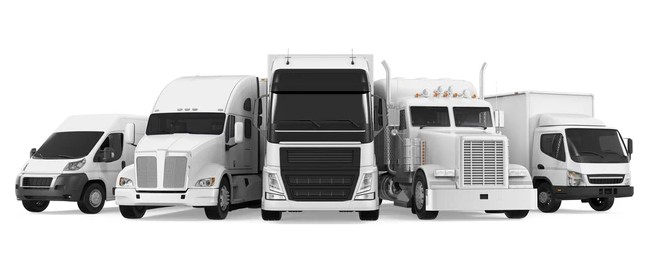- Home
- Practice AreasHood and Audre as well as everyone there are very professional. They handled my worker Comp case well beyond what I expected. I was very pleased with our results. I would highly recommend this firm for any legal matters they can help with. – Mark W., March 2022
- About Us
- Case Results
- Attorney Referrals
- Resources
- Community Development

What is a Commercial Motor Vehicle?
If you drive around town or down the interstate, you will come across a wide variety of vehicles that range from small to large, light to heavy, short to long. Businesses use vans, box trucks, buses, and trucks that pull one, two, and even three trailers. Regardless of the design, the general concept of a work vehicle is the same: get people or property from one location to another. However, not all vehicles and drivers are treated the same under the law. When a vehicle that fits the definition of a Commercial Motor Vehicle under Federal law, the driver and business must follow strict regulations that otherwise would not apply to the general public. In this blog, we will explore the law and why some vehicles are defined as Commercial Motor Vehicles or CMVs.
Background behind the law
In 1999, the Federal government passed the Motor Carrier Safety Improvement Act (49 U.S.C. §113). This law reclassified a division within the Federal Department of Transportation called the Federal Motor Carrier Safety Administration or FMCSA. The FMCSA, previously a part of the Federal Highway Administration, was tasked with preventing and reducing commercial motor vehicle-related fatalities and injuries.
Activities of the [FMCSA] contribute to ensuring safety in motor carrier operations through strong enforcement of safety regulations; targeting high-risk carriers and commercial motor vehicle drivers; improving safety information systems and commercial motor vehicle technologies; strengthening commercial motor vehicle equipment and operating standards; and increasing safety awareness. To accomplish these activities, the Administration works with Federal, State, and local enforcement agencies, the motor carrier industry, labor and safety interest groups, and others.
FMCSA website
Definition of a Commercial Motor Vehicle?
According to the federal government, a commercial motor vehicle (CMV) is any self-propelled or towed vehicle that is used in interstate commerce. Interstate commerce refers to trade, transportation, or traffic that crosses state borders or that begins or ends outside of a state or the country (South Carolina regulates commercial vehicles operating in intrastate commerce).
The primary activity or use of the vehicle helps determine if it is a commercial motor vehicle subject to federal regulations. A CMV must satisfy at least one of the following four conditions to fall under this definition:
- The vehicle has the capacity or is used to transport 16 or more passengers, including the driver, without compensation.
- The vehicle has a gross vehicle weight rating, a gross combination weight rating, a gross vehicle weight, or a gross combination weight of at least 10,001 pounds (4,536 kilograms).
- The vehicle has the capacity or is used to transport 9 or more passengers for compensation.
- The vehicle transports hazardous material defined under the Secretary of Transportation and the regulation 49 U.S.C. §5103. The vehicle transports the substance in a quantity regulated by the Secretary of Transportation under 49 CFR, subtitle B, chapter I, subchapter C.
A commercial motor vehicle can either be for a business in an individual’s name as a sole proprietor, owned by a business, or be a leased vehicle in the name of the leasing financial institution. Commercial motor vehicles can include trucks, buses, trailers, taxis, heavy equipment, trailers, and travel trailers.
Classification of Commercial Motor Vehicles
The United States Department of Transportation further defines commercial trucks into a series of classifications. The Department bases these classifications on gross vehicle weight ratings, or GVWR. The GVWR of a vehicle is the maximum operating mass or weight of a commercial vehicle. The manufacturer defines the GVWR, taking into account the engine, engine fluids, body, chassis, accessories, fuel, passengers, drivers, and cargo that the truck carries. However, the GVWR does not include any weight that the trailers may carry in cargo.
The Department uses GVWR to classify trucks into the following eight classifications.
- Class 1: GVWR ranging between 0 pounds to 6,000 pounds.
- Class 2: GVWR ranging between 6,001 pounds to 10,000 pounds.
- Class 3: GVWR ranging between 10,001 pounds to 14,000 pounds.
- Class 4: GVWR ranging between 14,001 pounds to 16,000 pounds.
- Class 5: GVWR ranging between 16,001 pounds to 19,500 pounds.
- Class 6: GVWR ranging between 19,501 pounds to 26,000 pounds.
- Class 7: GVWR ranging from 26,001 pounds to 33,000 pounds.
- Class 8: GVWR is any number above 33,000 pounds.
Drivers and companies must comply have a duty to operate a CMV in a safe manner and follow all federal and state regulations. If you suffer injuries in an accident caused by a commercial motor vehicle, you may have a personal injury claim. If you have been injured in a commercial motor vehicle accident, contact the experienced South Carolina commercial motor vehicle attorneys at Hatfield Temple today for a free consultation. Our attorneys can meet with you in one of our three office locations (Florence, Dillon, or Conway), at your home, or in the hospital.

